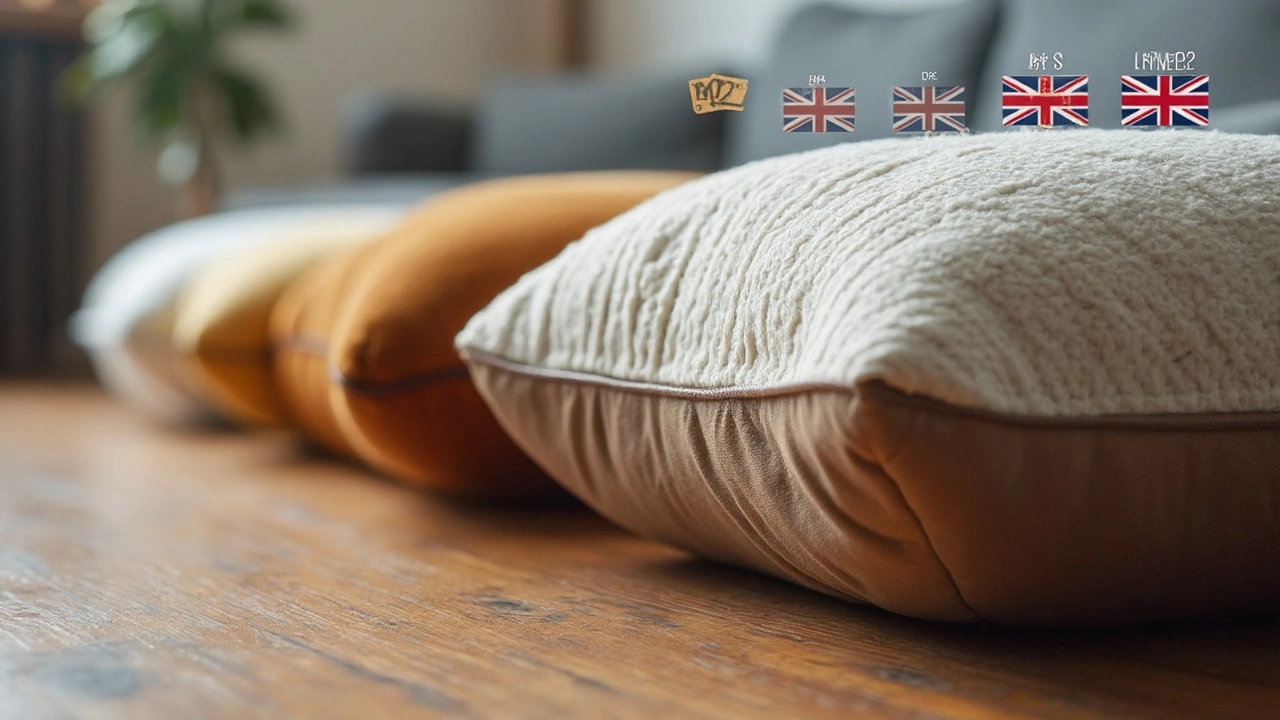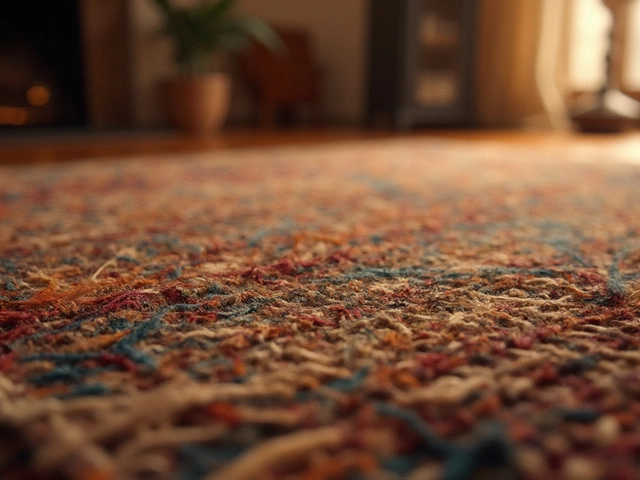Buying a couch isn’t just a purchase: it’s making a pact with your living room, hoping for those evenings spent binging your favorite show, or long weekends spent lounging. But then weeks or months later, the cushions flatten, the comfort disappears, and it feels like you’re sitting on a bed of pancakes. Why do some couch cushions plump up and last for years while others give up within months? Even more frustrating—big price tags don’t always mean lasting durability. Hidden inside every sofa is a story about materials, density, and a little thing called resilience.
What Makes Couch Cushions Last: Material Science and Cushion Construction
Not all couch cushions are created equal, and the thing that really draws a line between long-lasting comfort and quick disappointment is the material inside. Let’s get blunt: cheap polyester foam flattens fast. High-resilience or high-density foam, on the other hand, is the rock star of the cushion world. Ever heard of a foam’s “density rating”? That number matters more than you think. For household sofas, look for cushions made with foam rated at 2.0 pounds per cubic foot or higher. That little number means the foam is strong, less likely to develop sags or craters.
But foam isn’t the only material in the game. Some brands layer their cushions for even longer life, sandwiching firm foam with softer memory foam or even a down-blend top for softness. Want a classic hotel-level seat? Spring-down cushions take the cake. Inside is a basket of miniature coiled springs, wrapped in foam and then topped with feathers or fiber. It’s way pricier, but if you want your couch cushions to feel plush and never lose their bounce, this construction beats all the rest.
Don’t ignore the wrap, either. The outer covering, sometimes called a batting or envelope, keeps everything held together and provides that smooth, rounded look. The most durable ones are made of polyester fiber batting, down-fiber blends, or even Dacron wrap. You’ll notice fancy brands touting “encased” or “chambered” cushions. This design holds materials in distinct pockets, stopping the fill from migrating and keeping cushions neat, fat, and even-looking for much longer.
The inner liner matters as well. Cheap linings let fibers poke through or break down from the inside. Polypropylene and tightly woven ticking—think of them like a robust fabric envelope—stop this pesky poking and extend cushion life. And then there’s the cover. Crypton, Sunbrella, and performance polyester hold up far better to life’s messes than plain cotton or linen. Even the zipper makes a difference. YKK zippers rarely jam or break, so you can fluff or add fill later without stress.
Here’s a fun fact for cushion obsessives: NASA originally used high-resilience foam to absorb shocks in spacecraft seats. That same technology found its way into luxury sofas. If it’s good enough to cushion astronauts, it won’t let you down.

The Secret Life of Couch Cushion Lifespan: What Affects Durability in Real Homes
Of course, no matter how perfect the material, not every home treats its couch the same. A busy family room sees very different action compared to a rarely used guest den. Even sunlight, temperature, humidity, and pets play roles in cushion lifespan.
Let’s break down what really happens: High-density foam (2.0 pounds per cubic foot and above) holds its shape for up to 10 years with regular use. Lower density foams barely last 3-5 years before turning into limp mats. Spring-down cushions? Those can easily make it an entire decade before losing their springiness, especially if the feather or fiber fill gets fluffed weekly. Don’t fall for cheap hollow-fill or loose polyfiber cushions—they start pretty, but with daily sitting, they pancake in under two years.
Here’s something no store clerk will mention: how you use the sofa affects cushion life even more than the type of foam. If you have a favorite spot everyone claims, or if you like sprawling in one corner, expect those cushions to compress faster. Sitting on the arms or back cushions (as kids often do) pushes them out of shape and breaks seams. Flipping and rotating the cushions each week keeps wear even and extends their usable years. And if your couch has fixed cushions (sewn on or attached), tough luck—there’s no way to swap them around or replace the fill.
Pets add a whole new battle. Cats and dogs knead, scratch, and shed—over time, loose weave covers and open-cell foams break down faster when they’re clawed and compressed. Synthetic performance fabrics and denser foam cushions hold up better here. If your couch gets tons of sunlight daily, cushion colors can fade (unless you’ve picked out UV-protected fabric). Heat and humidity can speed up foam breakdown and even cause some feather/down blends to clump or mildew.
One little-noticed factor: The couch frame. Cushions are only as good as the support underneath. Springs, webbing, and solid wood platforms all distribute weight differently. A sagging frame means compression and uneven cushion wear, so check support as much as the cushion itself. Looking for true long haul value? Choose brands that use kiln-dried hardwood frames and robust eight-way hand-tied springs—it’s an old-school technique, but absolute gold for durability.
Thinking about repairs? Removable, zippered cushion covers mean you can refresh, re-stuff, or even dry clean as needed. Some companies even let you buy replacement inserts. And for crafty types, adding a layer of new batting or foam to older cushions breathes years back into tired seats.

Standout Couch Cushion Brands, Pro Tips, and Real-World Buyer's Guide
So which brands consistently make the longest lasting couch cushions? Surveys and owner reviews share some clear winners. Pottery Barn’s Comfort line, Room & Board’s Signature, and Arhaus sofas all use high-density foam and robust spring-down options. Joybird and Maiden Home both offer multi-layered cushions and let you choose your fill type. For European brands, IKEA’s high-density foam in their upper-end lines often surprises people—it’s not just budget basics anymore.
Looking for a low-maintenance, all-around champ? Sunbrella and Crypton performance fabrics resist almost any stains you throw at them. Brands like West Elm and Article are now using CertiPUR-US certified foam, which is not just durable but also low in chemical emissions.
But here’s where smart buying pays off: always read the specs before you buy. Marketing terms like “ultra-soft” or “plush” might feel great first week, but if you don’t see the actual foam density or construction details, assume it’s basic polyfoam or fiber. Cutting corners on the inside is how cheap sofas hide their real story. If the company lists “2.0+ lb/ft³ high resiliency foam,” or “individually pocketed coil spring core,” that’s your green light.
Don’t ignore smaller custom makers, either. Upholstery shops everywhere can rebuild or retrofit existing sofas with high-end foam or feather wraps for less than a full couch replacement. They’ll also usually share exactly which foam grade you’re getting so you know it’s not just marketing fluff.
Shopping secondhand? Give the cushions a brutal squeeze. If they bounce back, that’s high-density or spring-down inside. Sink and stay dents? Those will never be plumped up again, so move along. And if you want your investment to last, pick sofas with zippered cushion covers and reversible designs—that doubles your cushion lifespan with one simple trick.
Now for a handful of real-world tips that actually keep those cushions going strong:
- Flip and rotate cushions every week—set a calendar reminder if you must.
- Puff and re-fluff feather or poly-fill toppers (think like you’re kneading dough).
- Use slipcovers or throws for pets and kids. Replace or launder covers before stains settle and damage fabric fibers.
- Avoid eating or drinking on light-colored cushions, unless you secretly love cleaning up messes.
- If you feel springs, lumps, or sagging, open up the cushion—sometimes just adding a new sheet of foam restores the feel entirely.
- Vacuum underneath and between cushions monthly to avoid dust buildup that wears out fabric fibers.
- Keep the couch away from direct sun if possible, or pick a fabric with built-in UV protection.
- Don’t overload your couch with guests or pets; distributed weight helps cushions keep their shape.
If you want to make your investment last, don’t forget: Care is everything. Most high-end couches are designed for decades of use—that’s what you’re paying for. But treats like remote controls, phones, and even sharp toys slice through cheap covers, so pick your padding wisely. When you walk into that showroom or browse online, ignore the fluffy pillows and focus on what’s inside. The materials and the engineering are where durability actually lives.
Long story short, don’t buy the hype. Look for real specs. High-density foam around 2.0 or higher, spring-down construction, solid batting, and robust fabric covers. With this checklist—and a bit of weekly cushion TLC— you’ll be arguing over couch spots for years instead of shopping for a replacement every season. Isn’t that a better way to lounge?







